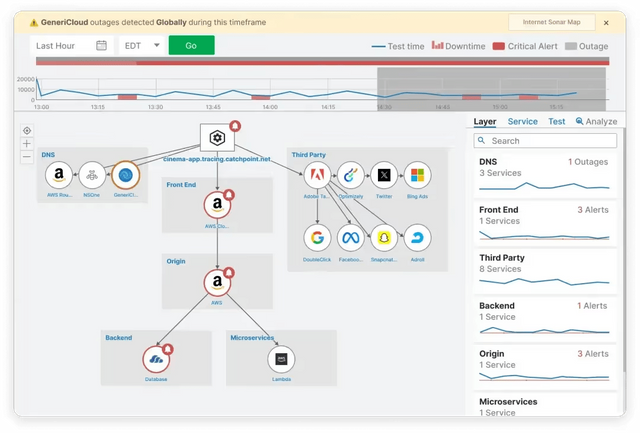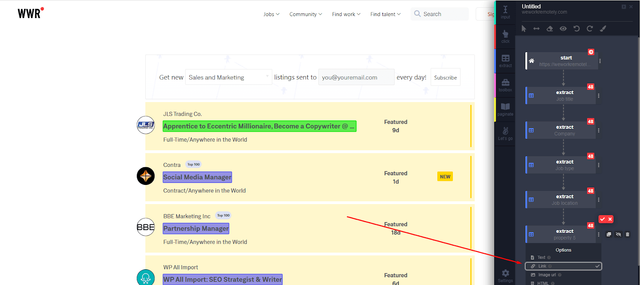How Automated Monitoring Bots Can Keep Your Website at Top Performance
Introduction
Website performance is more than just fast loading times — it’s about providing a smooth and responsive experience for users. Automated performance testing helps maintain this standard by using bots to monitor and test your site regularly. These bots check for slowdowns, broken elements, and other issues, ensuring your website stays efficient and reliable.
Whether you’re a developer optimizing site speed or a business owner ensuring uptime during busy seasons, automated monitoring and performance testing can help you stay ahead.
What is Web Performance?
Imagine you visit a website, and everything loads instantly — images appear, buttons respond, and animations run smoothly. That’s web performance in action. But it’s not just about speed. It’s also about making the experience feel fast and reliable, even when things might take longer behind the scenes.
Good web performance ensures a site loads quickly and stays responsive, no matter what. As explained in an article on MDN Web Docs, it’s about both real speed and perceived speed — how fast something feels to the user. For example, even a short wait feels bearable if a loading spinner or progress bar is reassuring you.
Here are a few things that make a real difference:
Quick to load: Websites run smoother when file sizes are kept small and unnecessary requests are minimized. Think of it like packing light for a trip — it’s just easier to move fast.
Early interaction: Pages should let you interact with core features as soon as possible. Additional content can load quietly in the background. Lazy loading helps with this — only loading images or videos when you scroll to them.
Smooth animations and clicks: If buttons respond instantly, pop-ups open without lag, and scrolling is smooth, the whole experience feels effortless. Using CSS animations instead of JavaScript can help keep things running smoothly.
How it feels matters: Even if loading takes a second, what the user experiences during that second can make all the difference. A small animation or helpful message beats staring at a blank screen and wondering if the page is stuck.
In the end, good web performance is like good customer service — quick, smooth, and leaving you with a positive feeling, even if things take a little longer than expected.
Web Performance Monitoring
Web performance monitoring is all about keeping your website running smoothly by tracking speed, responsiveness, and stability. Think of it as a regular health check for your site — helping you spot issues early and make improvements before users even notice a problem. As explained in an article on Catchpoint, performance monitoring has evolved from simple manual tests in the 1990s to sophisticated real-time tracking today.
Here’s how modern performance monitoring helps:
Core Web Vitals: These metrics from Google measure key areas like loading speed, visual stability, and interactivity. Keeping these metrics in check ensures a good user experience and can even boost your search rankings.
Synthetic Monitoring: This method uses scripts to simulate user behavior and see how your site performs under different conditions. It’s like testing your car on a variety of terrains to make sure it’s always road-ready.
Real User Monitoring (RUM): RUM collects data from actual visitors, giving you insights into how real users experience your site. This way, you can address bottlenecks that only show up in real-world use.
Automated bots are a natural extension of performance monitoring, ensuring tests are run consistently, even during high traffic periods or complex updates. With tools like load testing bots, you can simulate peak traffic and identify bottlenecks early. Automated response bots can step in to fix slow performance or downtime before users are affected.
Performance monitoring isn’t a one-time task — it’s an ongoing process to keep your website reliable and user-friendly, no matter how much traffic it gets or what new challenges arise.
Automating Performance Testing with Bots
Automating performance testing ensures your site stays fast and responsive by integrating regular tests throughout the development and release process. As outlined in the Grafana k6 guide, automation allows continuous testing, catching bottlenecks and issues early in the software development lifecycle.
Here are key ways automation enhances performance testing:
Load Testing Bots: These bots simulate heavy traffic to verify your site can handle peak loads without slowing down. This ensures smooth performance during sales or high-traffic events.
Stress Testing Bots: Stress tests push the website to its limits, helping you identify when and where it might crash.
Automated Response Bots: These bots detect slow performance or downtime and trigger actions like restarting services or sending alerts to your team.
Integrating automation into your testing strategy helps shift from a reactive to a proactive approach, ensuring your site is always prepared for real-world challenges.
Enhancing Website Monitoring with Automation
Once your website monitoring is in place, automating online tasks and performance checks becomes the next logical step. Automatio, a no-code automation platform, makes it easy to manage web-based tasks without technical skills. Whether you need to monitor real-time metrics, test link functionality, or scrape reports, Automatio provides customizable bots that reduce manual work and ensure seamless operations.
Here are a couple of examples of how Automatio bots can enhance your monitoring strategy:
Automated Link Checker: Automate routine checks to ensure all links across your website function properly. This link clicker bot, (learn more) eliminates the need for manual verification by scanning multiple pages and alerting you to any broken links before users encounter them.
Real-Time Metrics Extractor: Extract key performance metrics instantly from speed tests, API responses, or monitoring dashboards. This instant data scraper bot, by Automatio AIorganizes your data in Google Sheets, making it easy to track, analyze, and respond to insights — without needing to access several platforms manually.
Automating these tasks helps businesses maintain a smooth user experience while freeing up time to focus on growth.
Conclusion
Keeping a website running smoothly isn’t just about putting out fires — it’s about staying a step ahead. That’s where good monitoring and a bit of automation magic come into play. Monitoring tools help you keep an eye on things like speed and stability, but adding bots to the mix? That’s when things start to click.
In the end, it’s about being prepared. When you have reliable monitoring and automation working together, your website isn’t just ‘working’ — it’s performing, evolving, and ready for whatever’s next. And that’s what makes all the difference.



